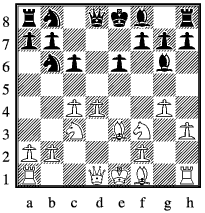
February 2011
RR's moronic play in 2011 continued in his game against Matthew Wyza.

|
| Matthew Wyza v RR after 9 ... Bg6 |
10 ... Na6, 11 c5 Nd5, 12 Nxd5
White gives too much credence to blacks threat on c2 via Nb4, undervaluing his own attack in comparison.
(12 Qxb7 Nbd4, 13 0-0-0 Rb8, 14 Qxa7 Nc7 and white is 2 pawns up. Other defences such as
12 ... Nab4, 13 Nxd5 Nxd5 designed to hold material lead to disaster for black starting with Qxc6+)
12 ... Qxd5 Be4 better, bringing it to the defence of the c6 pawn as well as causing problems to white's kingside on the long diagonal. But the recapture reflex is alive and kicking and currently appearing in RR's repertoire.
13 Qxd5 Once more white prefers to liquidate black's threats than to pursue his own with
13 Qxb7 Rb8, 14 Qxa6 Qxf3, 15 Rg1 Qd5 and white can create a passed pawn with Qxa7 or consolodate his pawn advantage with b3.
13 ... exd5, 14 Bxa6 bxa6
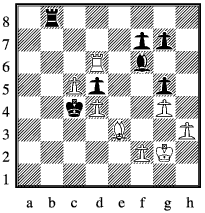
|
| Final position Matthew Wyza v RR after 35 ... Kc4 |
With Cheddleton totalling over 900 on the night against our mere 810 our task would not be easy. RR found himself opposed by Rob Shaw, one of the very biggest beasts on the local scene. What to do?
There seem to be three schools of thought of how to confront a much stronger player. One simply says play your natural game. Anything else and you are likely to play below your normal standard, making the opponent's task even easier. Against this, the beasts thrive on normal, so deviate is the cry.
One deviation is to mix things up, playing any double edged move you can find, and generally trying to randomise the position and so hopefully the result. But the stronger player may well see through the fog more clearly, or simply sidestep the randomising efforts leaving you with an untenable mess.
Method three is to deviate in the opposite direction, playing KISS (keep it simple, stupid) chess. This involves playing solid moves and exchanging material when the opportunity arises. I've had quite a bit of experience of being on the recieving end of such tactics from weaker players than myself (they do exist), and have to say that often this approach is most welcome. Frequently what happens is that in the rush to swap material off they allow weaknesses in their pawn structure to develop which are easy to exploit in the endgame, or allow my final piece(s) to become dominant.
So none of the methods really work. But then against a significantly stronger player that is no surprise. However play something I must, so I elected to attempt a style at the KISS end of my normal one.
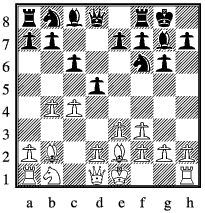
|
| RR v Rob Shaw after 6 ... d5 |
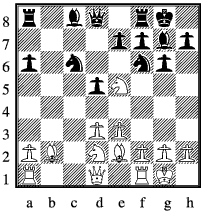
|
| RR v Rob Shaw after 13 Ne5 |
Some fairly painless exchanges which RR has managed to induce without compromising his own position (see left). Indeed with c5 under his control RR still has a real foothold in the game, even if there are no black weaknesses to attack.
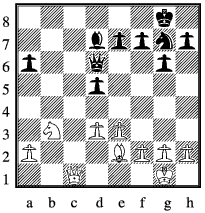
|
| RR v Rob Shaw after 21 Qxc1 |
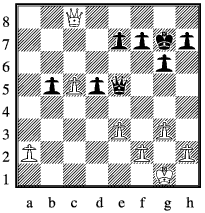
|
| RR v Rob Shaw after 27 g3 |
The Arsene Wengers of this world might whinge about RR's approach, but Rob is made of better stuff. And the team drew too. Phew!
comment on this article